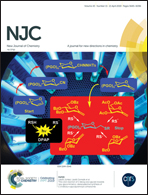Preparation and evaluation of gastro-floating hollow adhesive microspheres of carbomer/ethyl cellulose encapsulating dipyridamole
Abstract
Gastro floating hollow adhesive microspheres containing dipyridamole were produced by using an emulsion solvent evaporation method with ether and ethanol as solvent, ethyl cellulose and Carbopol 934P as the encapsulating carrier. The effects of solvent volume ratio and concentration of the polymer on the encapsulation efficiency, floating percentage and adhesive characteristics of the hollow microspheres were investigated by an L9 (34) orthogonal array design. The physicochemical characteristics, drug release properties and storage stability of the optimal microspheres were evaluated in vitro. The adhesion percentage of the spherical and hollow microspheres in vitro was found to be 98%, and more than 73% of the microspheres tended to float over the gastric solution for nearly 12 h. The in vitro drug release from these hollow microspheres followed the Higuchi model equation. The in vivo results showed that the relative bioavailability of the microspheres was improved by approximately 1.82-fold compared with that of the commercial tablet. Our results demonstrate that the hollow microspheres with good gastro-floating and adhesive ability are a promising delivery system for the acid-soluble drug of dipyridamole.



 Please wait while we load your content...
Please wait while we load your content...